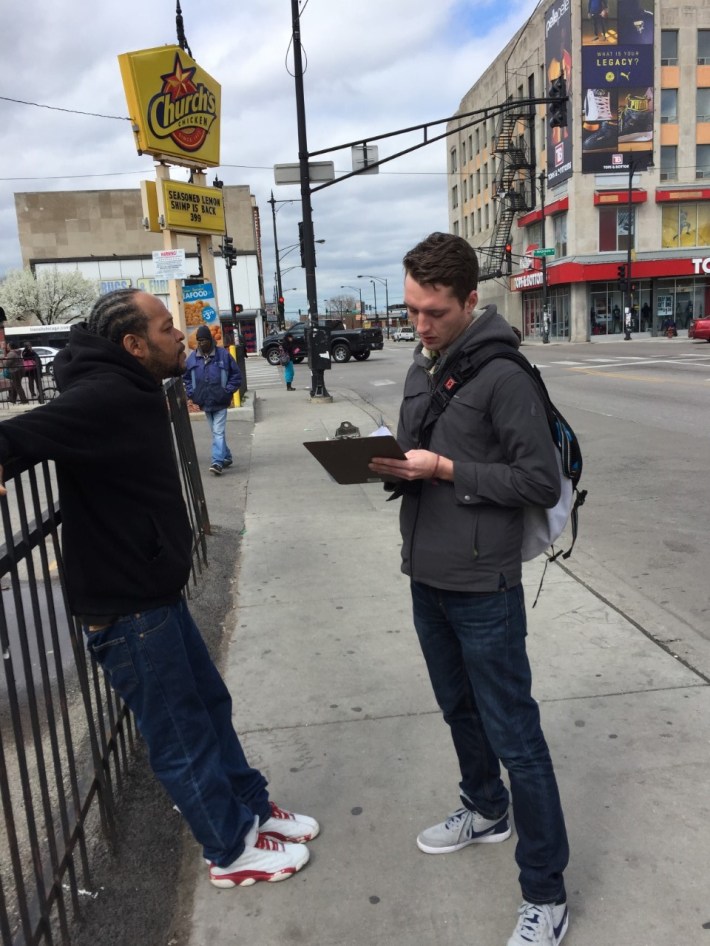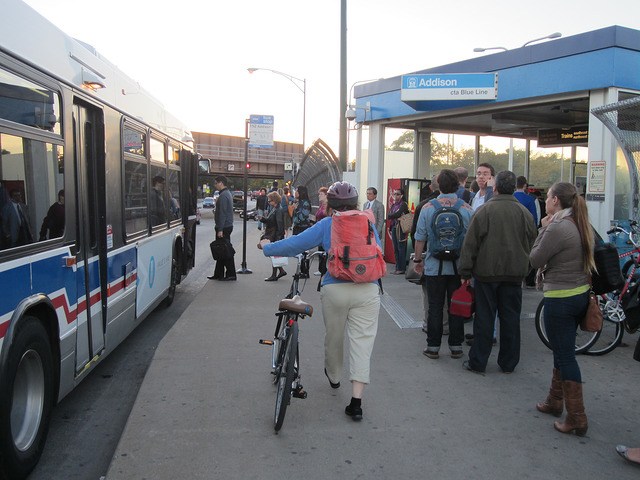Last fall TransitCenter, a New York-based foundation dedicated to improving urban mobility, awarded the Active Transportation Alliance one of 16 grants distributed nationwide to promote better bus and rail service. Active Trans has been using their $150,000 in funding for a project called Speeding Up Chicago’s Buses, which involves working with the CTA and the Chicago Department of Transportation to eliminate some of the roadblocks to faster service and higher ridership. Active Trans has hit the ground running by getting input from almost 2,000 local straphangers about the improvements they want to see made to local bus service, and the group will be using this feedback to push for positive change.
Why is it so important to speed up the buses? While ‘L’ ridership hit record levels in 2015, the latest year the CTA has released data for, bus use dropped for the third year in a row, falling by 0.6 percent from 2014 levels to 274.3 rides. “Our goal with this project is to shine a light on the issues and challenges the CTA is facing with its bus network, which is often overlooked in favor of rail,” said Active Trans governmental relations director Kyle Whitehead. “But lower-to-middle-income communities are often dependent on bus service. The trend of dropping bus ridership is alarming, and the potential for increasing rail service is limited due to cost concerns. So making low-cost, near-term improvements to bus service would benefit existing riders and attract more ridership.”
The first phase of the project is focused on collecting data and input. Working with the CTA and CDOT, Active Trans identified the following routes for potential improvements:
#4 Cottage Grove
#8 Halsted
#53 Pulaski
#66 Chicago
#79 79th
#80 Irving Park
In March they launched an online survey, available in English and Spanish, asking CTA customers about their experience riding these lines. The survey will continue until the end of April.
Whitehead and Active Trans interns have also been doing in-person canvassing at popular bus stops along these routes, often key transfer spots like ‘L’ stations. They’ve also focused on locations where there are bottleneck issues, such as stops with boarding delays that could be addressed by having customers pay their fare before boarding the bus. (The CTA has already been testing prepaid boarding at bus stops by the Belmont Blue Line station and at the Madison Avenue and Dearborn Street stop along the Loop Link route.) Recently they’ve buttonholed riders at the 79th Red Line station and the Irving Park Blue Line stop, plus the North/Pulaski bus stop and several Pulaski stops further south.

The online and in-person questionnaire asks which of the six featured bus routes the respondent rides most frequently, how often they ride, how they would rate their ridership experience, and what kind of commutes they make by bus, such as trips to work, school, shopping, medical appointments, entertainment, and social visits.
Then CTA customers are asked to rate the importance of various aspects of the ridership experience, from “not important at all” to “extremely important.” These include how long the wait is for a bus; how fast the trip is; whether the stop has a bench, shelter, or electronic display with bus arrival info; how long the trip actually takes compared to how long they expect it to take; how easy, safe, and pleasant it is to walk to and from the bus stop; and whether or not they could sit comfortably aboard the bus.
In addition, Active Trans has identified at least one community organization along each route that is interested in collecting input on ways the routs could be improved.
Using this input, along with input from other advocates and experts from inside and outside Chicago, plus data analysis and input from the CTA and CDOT, Active Trans will prepare a report with analysis and recommendations for improving service. “These will be our advocacy recommendations moving forward,” Whitehead said.
In addition to prepaid potential improvements to these routes include all-door boarding and level boarding (which is more-or-less provided by the raised Loop Link stations), transit signal prioritization (which is currently being implemented on Western and Ashland), and bus-only lanes. “The dedicated lanes wouldn’t necessarily be for the entire route, but they’d be especially useful in slow zones, where delays can have a ripple effect in terms of bus bunching and reliability along the whole route,” Whitehead said.
Once Active Trans has narrowed down the types of improvements that are most important to CTA customers, their goal will be to be to build political will for these changes by educating the public and the media about the potential benefits, and lobbying lawmakers to throw their support behind these initiatives. These relatively inexpensive, commonsense solutions could go a long way towards improving Chicago’s transportation network, so hopefully local leaders will get on board with the plan.




